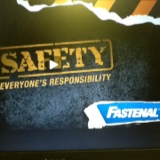Information
-
Document No.
-
Department 6S Walkthrough
-
Client / Site
-
Conducted on
-
Prepared by
-
Location
-
Personnel
Sort
-
Is the area free of excess equipment, tools, and supplies?
-
Are work areas clean, organized, and free of dust, dirt, cluttered items and debris?
-
Are parts, product, tools or supplies in correct locations (I.e., placed on correct shelf or storage location, stored in correct bin or composite)?
Systematic Organization
-
Are items placed in marked locations, i.e., pallet jacks, garbage cans, supplies, etc.?
-
Are shelves, racks, and stacks of products organized and secure (boxes closed, one box open at a time, no trash present)?
-
Are tools and equipment clean and organized?
-
Are supplies within posted min/max requirements?
-
Are vending machines maintained and stocked with supplies (employees have assigned pin # and access privileges )?
-
Is there only one pallet ID per pallet or knockdown?
-
Are stock labels in the correct location (not placed on racks)?
-
Are employees following work instructions (instructions are posted proximate to work stations or assigned area, within current date, JSA posted -reviewed or updated within past 12 month period)?
Shine
-
Are floors clean and clear of dirt, excess trash, empty boxes and debris, and aisle or walk ways are open and unobstructed?
-
Are cleaning supplies accessible and stored in marked cleaning stations (cleaning supplies available)?
-
Is signage and labels in good condition (not hand-written, damaged, askew, outdated or bearing incorrect description)?
-
Are areas under work stations, racks, shelving, conveyors, storage stations, free of dirt, trash, and/or excess product?
-
Are bolt kegs covered, product boxes, and/or totes covered where applicable and properly stacked or stored?
Simplify and Standardize
-
Are ISO work instructions posted and up to date?
-
Are supplies readily accessible?
-
Are quantities and limits such as pallet heights visible?<br>
-
Is work left incomplete ( previous day product left out, etc)?
-
Are employees wearing employee ID badge (fork lift drivers badge displays correct license)?
-
Do employees know ISO and 6S practices?
-
Are 6S posters present or proximate to work stations or department?
-
Are proper forms being utilized (ladder, lift and harness inspections, battery sheets, etc.)?
Sustain
-
Are previous audit results posted?
Safety
-
Is employee safety training, review of JSA, complete?
-
Are fire exits and extinguishers accessible (employees know secondary exit location and basic requirements of extinguisher use)?
-
Are employees adhering to cell phone and radio policy (I.e., no ear-buds, Bluetooth ear devices, or ear phones)?
-
Is the area free of gang-plugging and/or the use of extension cords as permanent wiring?
-
Do electrical panels and junction boxes have minimum of 36 inches of clearance?
-
Is the department free of trip hazards?
-
Are conveyor and equipment controls and emergency stop cords or buttons accessible (where applicable)? Do employees know procedures?
-
Are safety guards in use (cage doors, mezzanine gates, machine guards, dock chains, etc.)?
-
Are only trained employees operating equipment?
-
Are proper lifting procedures being observed?
-
Are employees using proper PPE where required, (i.e., gloves in rod and strut, steel-toe shoes on lift equipment, drivers wearing eye protection while driving into trailers, in tool repair, etc....)?
-
Are employees using caution around machines?
-
Are pallets and composites laying flat and stacked securely and neatly?
Forklift / Other
-
Are pallets that are in use in good condition?
-
Are employees signaling at intersections?
-
Are employees using reverse appropriately when carrying large loads?
-
Are forklifts left only in appropriate areas?








